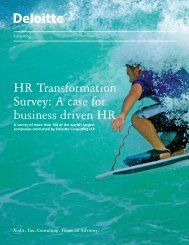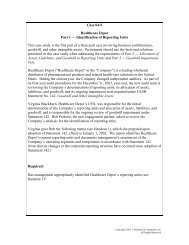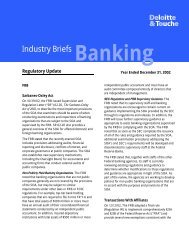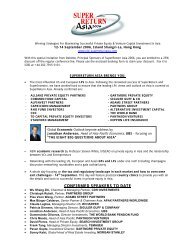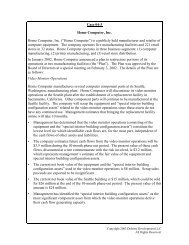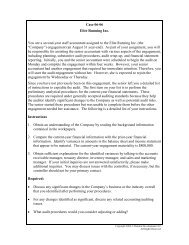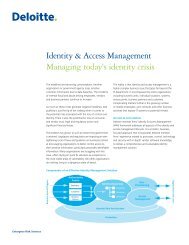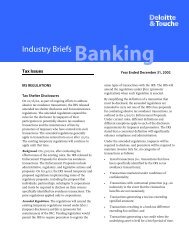Taking HR to the next level - Deloitte
Taking HR to the next level - Deloitte
Taking HR to the next level - Deloitte
- No tags were found...
Create successful ePaper yourself
Turn your PDF publications into a flip-book with our unique Google optimized e-Paper software.
3. Identify <strong>HR</strong>’s primary performance leversDevelop <strong>HR</strong> performance measures that align with business objectives andprovide a baseline <strong>to</strong> track performance and drive improvement.Implement reporting and analytic capabilities <strong>to</strong> provide business insight,not just data.To develop <strong>HR</strong> services that align with <strong>the</strong> company’s vision, it’simportant <strong>to</strong> develop performance measures that show how <strong>HR</strong> cancontribute <strong>to</strong> business value. In recent years, many companies havemade substantial progress in defining and implementing performancemeasures and scorecards for <strong>HR</strong> — particularly around cost-relatedmeasures, such as <strong>to</strong>tal payroll and <strong>to</strong>tal compensation. Theseperformance measures are a step in <strong>the</strong> right direction; however,<strong>the</strong>re is still much more <strong>to</strong> be done.As <strong>HR</strong> becomes more strategic, it must focus on value-relatedmeasures, such as management time spent on managing peopleissues and time <strong>to</strong> efficiency for new managers and employees 2(see figure 4 ).<strong>HR</strong>’s performance measures should focus on business impact, notjust on <strong>HR</strong> operating efficiency. For example, one of <strong>the</strong> most effectiveways <strong>to</strong> see if a company is leveraging <strong>the</strong> value of its people is <strong>to</strong>analyze its workforce productivity — revenue per employee dividedby profit per employee — and <strong>the</strong>n compare <strong>the</strong> result <strong>to</strong> o<strong>the</strong>rcompanies in <strong>the</strong> industry. O<strong>the</strong>r value-oriented <strong>HR</strong> metrics includenew hire turnover and promotion rates, bench depth/breadth ratios,lateral mobility ratios, retention rates for critical workforce segments,and pay-for-performance ratios.Figure 4: Value-Related <strong>HR</strong> BenchmarksWhich of <strong>the</strong> following benchmarks does your companytrack now, and which are you likely <strong>to</strong> begin tracking in<strong>the</strong> <strong>next</strong> three <strong>to</strong> five years?Sec<strong>to</strong>rproductivity ratioTime <strong>to</strong> efficiencyfor new managersand employeesManagement timespent on managingpeople issuesTotalcompensation0% 25% 50% 75% 100%TodayIn 3-5 yearsResults based on all participantsNot likely <strong>to</strong> trackDon’t knowSource: “Aligned at <strong>the</strong> Top” survey, <strong>Deloitte</strong> Touche Tohmatsu and <strong>the</strong> Economist Intelligence Unit.2“Aligned at <strong>the</strong> Top” survey, <strong>Deloitte</strong> Touche Tohmatsu and <strong>the</strong> Economist Intelligence Unit, 2007.6



